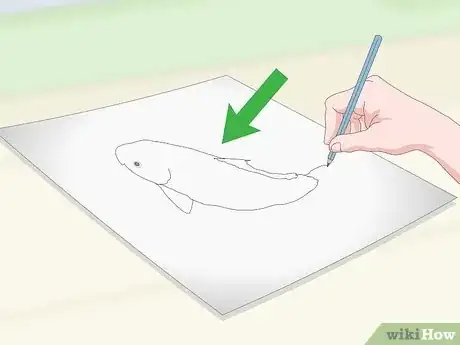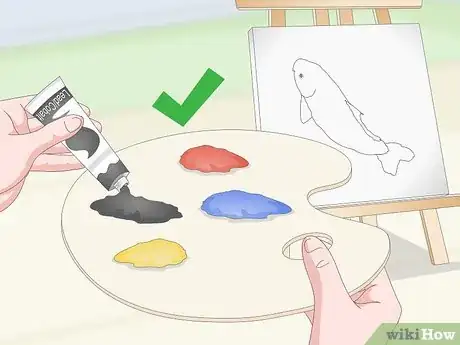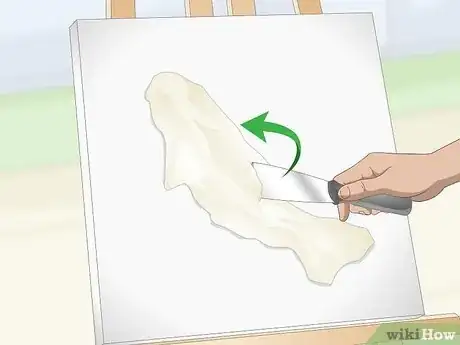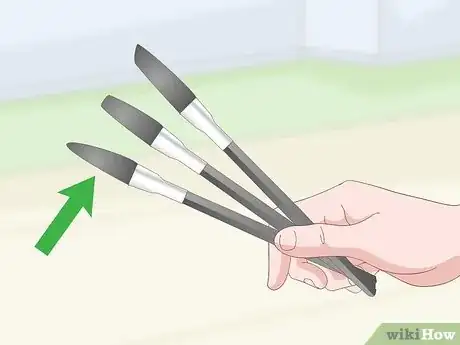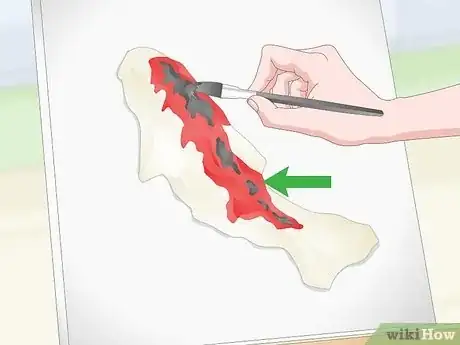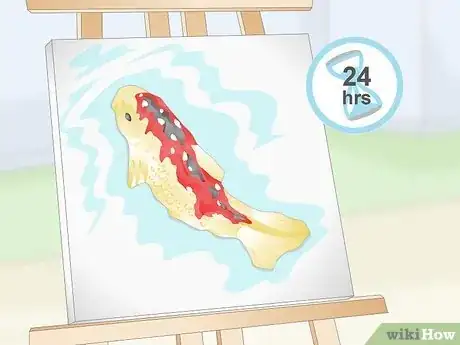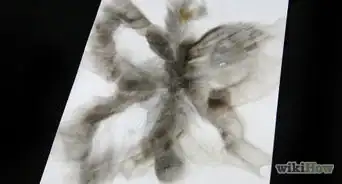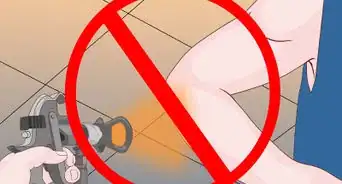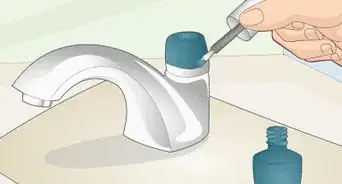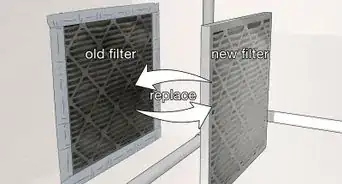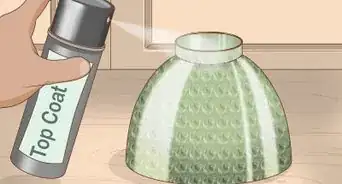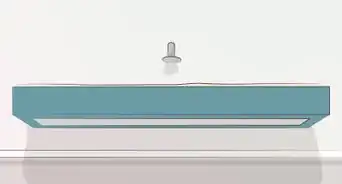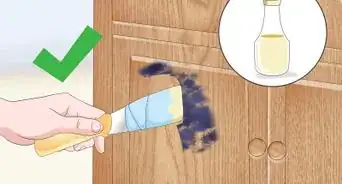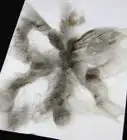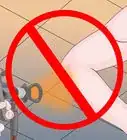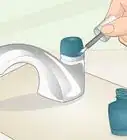This article was co-authored by wikiHow Staff. Our trained team of editors and researchers validate articles for accuracy and comprehensiveness. wikiHow's Content Management Team carefully monitors the work from our editorial staff to ensure that each article is backed by trusted research and meets our high quality standards.
There are 7 references cited in this article, which can be found at the bottom of the page.
This article has been viewed 142,013 times.
Learn more...
Fresco paintings are made by painting on freshly laid wet plaster. As the paint and plaster both dry, they become completely integrated. If you’ve heard of this style of painting, you may think only a Renaissance artist can do it. However, once you know how to mix and apply the plaster and in what order to apply your paint to it, you too can make a gorgeous fresco painting!
Steps
Creating the Design
-
1Create a basic drawing of your design on a thin piece of paper. This drawing doesn’t need to be very detailed; just sketch the outline of the design you intend to create for your fresco painting. Make sure the paper you use is thin enough that you can easily poke holes through it.[1]
- The official word for this drawing is a “cartoon.”
- Traditional frescoes are painted on walls as large murals. However, if you don’t have access to a large wall, it’s perfectly acceptable to make your fresco painting on a large wooden-framed canvas.
-
2Perforate the paper and trace the design on the canvas with charcoal. First, use a thin pin or needle to poke tiny holes along the outline of your drawing. Then, lay this perforated paper over the top of the canvas. Finally, rub a stick of charcoal or sifted powdered paint along the perforations to create a trace of the outline on the canvas.[2]
- This allows you to create rough borders for the area of the canvas that you’ll need to apply plaster to.
- This method of charcoal tracing is the traditional way to make a fresco painting. If you don’t want to go through the hassle of perforating and tracing, you can draw your design directly onto your canvas.
- You can buy a charcoal stick or powdered paint at most art supply stores.
Advertisement -
3Decide what colors you’ll use to paint the different parts of your drawing. When you go to actually paint your fresco painting, you’ll have to do so quickly before the plaster completely dries. Deciding which colors to use and where before you begin painting will make it much less likely for you to make a mistake during the actual painting process.[3]
Mixing and Applying the Plaster
-
1Mix 2 parts plaster of Paris powder to 1 part water to mix your plaster. Pour 1 cup (240 mL) of water into a mixing container. Then, pour 2 cups (360 grams) of plaster of Paris powder into the water, sprinkling it throughout the water as you go. Slowly stir the powder and water together until it reaches a uniform and smooth consistency.[4]
- You may need to create a larger batch of plaster, depending on the size of your canvas. Check the manufacturer’s instructions on your plaster of Paris to see how much plaster you should create to cover the surface area of your canvas.
- Use safety gloves while mixing together your plaster. Do not mix the plaster of Paris with your hands or allow any of it to get onto your fingers. It will set very quickly and become very difficult to remove.
Warning: Be sure to wear safety goggles and a breathing mask to prevent inhaling the plaster of Paris powder.
-
2Use a spackling knife or plasterer’s trowel to apply the plaster. You’ll need to do this quickly after you’ve mixed the plaster so that it doesn’t set before you can actually paint on it. Spread the plaster evenly in the area you traced on your canvas.[5]
- Apply a generous coat of plaster to the canvas. Aim to place about a 1⁄2 in (1.3 cm) layer of plaster inside your drawing.
- Only apply the plaster to the area that you’ll be painting. Don’t coat the entire canvas.
-
3Allow the plaster to dry for about 20 minutes. This is just enough time for the plaster to dry to the consistency you’ll need for fresco painting. The plaster will need to be dry enough to paint on, but still slightly wet so that the paint will blend with the plaster.[6]
Painting on the Plaster
-
1Use soft, long-bristle brushes to apply paint to the plaster. The plaster surface will be relatively sensitive at first, so softer brushes are best, especially when applying your first coat. Go with round, flat brushes made of sable hair for best results.[7]
- You can buy these types of brushes at any art supply store.
- If you can, get a variety of brushes in different sizes. That way, you’ll be able to apply the paint in varying levels of detail.
-
2Apply your darker, monochrome tones first. Create the “under-painting” of your design, such as dark areas or areas in shadows, with earthy pigments like brown or dark green. However, make sure you only paint the areas that you want to have a darker tone. In fresco, you can't get rid of a bad color once you've applied it, so make sure you carefully plan out the tones you use.[8]
-
3Finish by adding the rest of the color to your painting. You will mostly be filling in those spaces that you didn’t paint with the darker colors. Work on middle-ground colors after applying the base color. Finally, finish by adding the fine details to your painting last.[9]
- Feel free to paint over the dark tones you’ve already created; the paint will only blend slightly and create a “dark” version of the color you’re adding to the canvas.
- Be sure to do this as quickly as possible. By this point, the plaster will be drying much faster and will soon be too dry to make a fresco painting on.
-
4Set aside your painting for at least 24 hours to dry. This will give the painting time to dry enough so that you can hang it or put it on display somewhere. However, give the plaster 4 weeks to completely set before attempting to make any changes or touch-ups to the painting.[10]
Community Q&A
-
QuestionIsn't true fresco is made of river sand and lime, using a wall or prepared wood as a surface?
 Community AnswerNo, sand and lime were just ingredients in making the plaster. You can use plaster of Paris from the store. It’s just as traditional because as soon as plaster appeared on the scene, everyone was using it.
Community AnswerNo, sand and lime were just ingredients in making the plaster. You can use plaster of Paris from the store. It’s just as traditional because as soon as plaster appeared on the scene, everyone was using it. -
QuestionWhere do I find plaster for making a fresco painting?
 Community AnswerAny plaster of Paris will work; you can find it in a craft or hardware store. Just look for plaster that feels good quality, as cheaper plaster will not work as well with the binding.
Community AnswerAny plaster of Paris will work; you can find it in a craft or hardware store. Just look for plaster that feels good quality, as cheaper plaster will not work as well with the binding. -
QuestionCan I use acrylic paint to paint a fresco with?
 Secret_Queen01Community AnswerIt can be used but it's not the best choice. Acrylic is plastic, sits on the surface; fresco is normally painted with a mineral based pigment because it soaks in and becomes one with the surface.
Secret_Queen01Community AnswerIt can be used but it's not the best choice. Acrylic is plastic, sits on the surface; fresco is normally painted with a mineral based pigment because it soaks in and becomes one with the surface.
Things You'll Need
- Thin paper
- Charcoal stick or powdered paint
- Pin or needle
- Plaster of Paris powder
- Mixing container
- Acrylic paint
- Soft, long-bristle paint brushes
References
- ↑ http://www.muralist.org/fresco/painting.html
- ↑ http://www.muralist.org/fresco/painting.html
- ↑ http://www.muralist.org/fresco/painting.html
- ↑ https://www.firstpalette.com/craft-recipe/mixing-plaster-of-paris.html
- ↑ https://www.youtube.com/watch?time_continue=5&v=G7szlL-0vrU#t=3m30s
- ↑ https://www.teachervision.com/painting/making-fresco
- ↑ https://www.youtube.com/watch?time_continue=5&v=G7szlL-0vrU#t=6m08s
- ↑ https://www.youtube.com/watch?time_continue=5&v=G7szlL-0vrU#t=6m30s
- ↑ https://www.youtube.com/watch?time_continue=5&v=G7szlL-0vrU#t=10m
